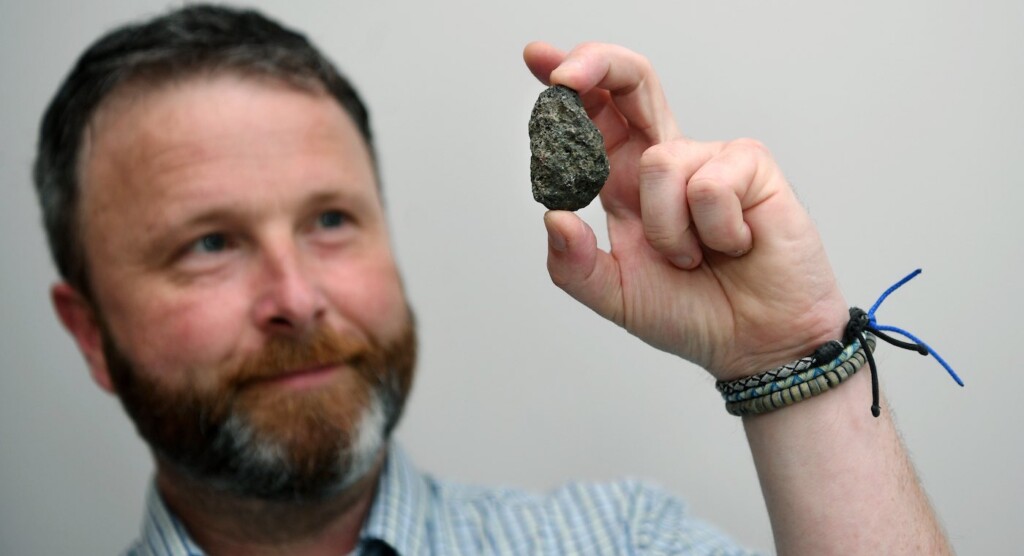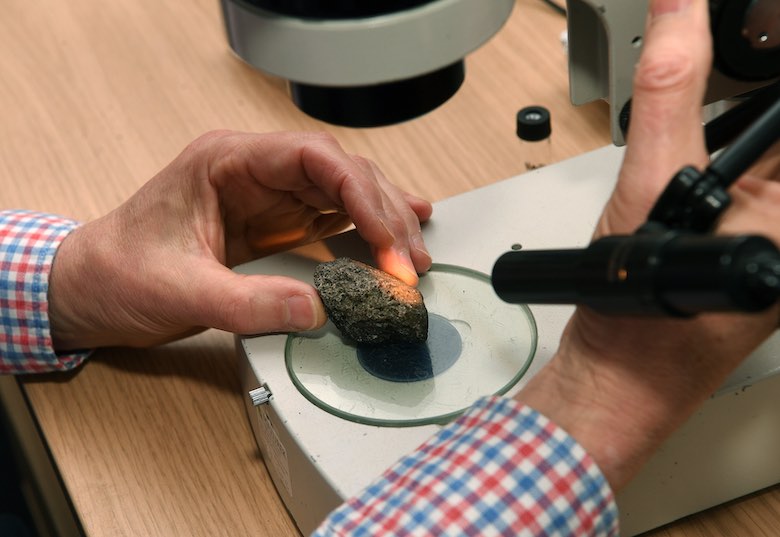
An English homeowner described his shock after watching a suspected meteorite burst through the sky and land near his property.
Dan Charlton was standing in his back garden in the early hours of the morning when he saw a green light and heard a “whoosh” as the object plummeted to the ground in Wakefield, West Yorkshire.
The next day, he discovered a small charred rock lying on a street close to his home—and it was still warm and smelled burnt.
“I went outside and looked up and saw this light and thought, ‘Is that a firework?’
“It was really close,” said Dan. “It came down in a straight line, and what was interesting was it had a green flame, like a hue, that burnt and then disappeared.
“You could hear it make a brief ‘whoosh’ sound and then I was expecting a big bang but it was just silent.
“There was no one else around and I thought ‘that’s definitely a meteorite’. I was fascinated.”
Following the otherworldly display on May 6, which lasted a matter of seconds, he searched online and discovered it could be debris from Halley’s Comet, because it smelled like it had been “in a fire”.
He later showed a picture of the object to a geologist, who told him it “appears to be a meteorite” and said a simple test could prove it.
“He said that it would have a light magnetic field so I got a magnet—and found that it worked.”

He later took the rock to the University of Leeds where he met with Professor Simon Kelley who looked at it under the microscope.
“He wasn’t 100% convinced but he didn’t really know what the rock was. He suggested it could be volcanic.”
Professor Kelley said it was too early to tell, but it was unusual and planned to carry out further testing.
“When I looked at it with the microscope, there were clues that made me lean towards it being a terrestrial rock,” said Kelley. “First of all, I could not see any evidence of a fusion crust.
GEO MYSTERY SOLVED: Mystery of Scattered Black Glass in Chilean Desert Solved – it Was Made by an Exploding Comet
“Meteorite falls normally have a thin coating of black melted rock which forms as a result of the friction of falling through the atmosphere.
“Also, I could see what appeared to be holes and medium-sized crystals. Most meteorites are extremely fine-grained and contain very characteristic circular structures called chrondrules.
“However, there are other types of meteorites, so we can’t be certain about the rock’s classification just yet.”
LOOK: ‘Alien’ Minerals Never Found on Earth Before Reveal Their Traumatic Origin Story
Kelley, whose areas of expertise include planetary science and geochronology, said to be absolutely sure, he would begin by cutting a slice of the rock.
“That slice will then be ground and polished so that it is so thin we can shine light through it and we will be able to identify the internal structures and minerals.
GIANT METEOR FOUND: Huge Meteorite Found in Antarctica–One of the Biggest Ever Recovered
“That will take a couple of weeks to complete and we’ll then get back in touch with Dan to share the details of what makes up the rock he found.”
SEND THIS HEAVENLY ROCK to Stargazers By Sharing it on Social Media…




















